Discovering Boat Surf Trips in Indonesia
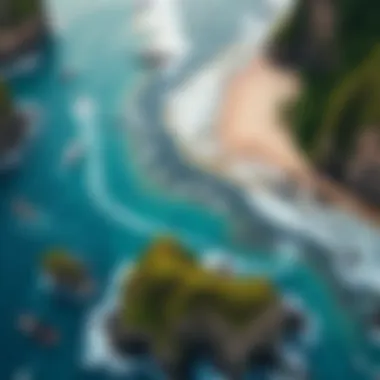
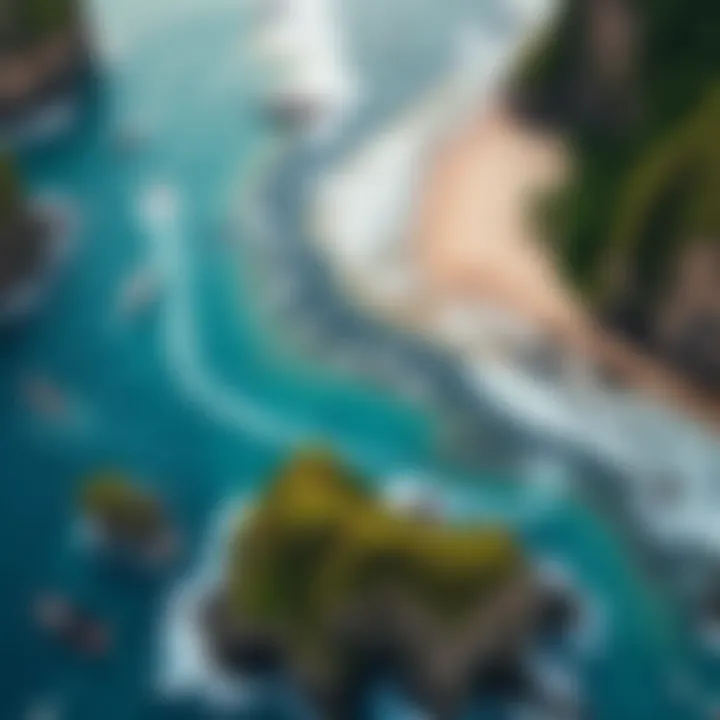
Intro
When you think of Indonesia, images of pristine beaches and rolling waves undoubtedly spring to mind. This archipelago, spread across more than 17,000 islands, presents a canvas for surfers that is almost too good to be true. Each wave tells a story, and every reef, a secret waiting to be discovered. For those looking to immerse themselves fully in the surf culture of Indonesia, boat surf trips offer a unique adventure. Through such expeditions, not only can you ride some of the finest waves the Pacific has to offer, but you also get to soak in breathtaking landscapes and blend with the local culture.
This guide aims to navigate the various facets of boat surfing in Indonesia, diving into not just the physical thrill of riding the waves, but also the gear you’ll need, the skills and techniques to enhance your surfing experience, and practical tips for safety and travel. Whether you’re an experienced rider or just starting to dip your toes into the water, understanding these intricacies can elevate your surf trip from an ordinary holiday to an unforgettable journey.
With that, let’s dive into the essentials; starting with the gear and equipment that ensure you are more than prepared for your surfing adventure.
Prelude to Indonesia's Surf Scene
Indonesia is a surf haven that draws wave enthusiasts from all corners of the globe. It's renowned not just for its breathtaking landscapes but for surf breaks that offer something for everyone, from rookies to professionals. This section aims to shed light on what makes Indonesia's surf scene so special and important, providing a robust foundation for the discussions that follow.
The Appeal of Boat Surf Trips
Boat surf trips are gaining traction among surfers seeking to explore remote breaks while enjoying the adventure of the open sea. One of the most significant appeals of these trips is the ability to access spots that are often challenging to reach by land. Picture yourself gliding across the azure waters, a warm breeze tousling your hair, knowing you’re heading towards waves that have barely been touched by other riders.
On a practical note, boat trips often come with experienced local guides who know the ins and outs of the area—from the best times to catch the swell to secret spots that might not even be listed in surf guides. This makes it easier for surfers to find what they're looking for and reduce the guesswork involved in planning a trip.
Moreover, the camaraderie that develops among fellow surfers aboard creates a unique experience. When you’re on a boat, everyone shares the thrill of waiting for a wave to roll in, cheering each other on as they take turns riding. It's not just about catching the best wave; it’s about the friends you make and the shared experiences.
In light of this, many surfers find themselves choosing a boat trip over traditional stay options. By swapping a hotel room for a bunk on a boat, they’re opting into a more immersive experience that combines adventure with sport. Also, it’s worth mentioning that these trips often come with additional amenities like meals prepared on board, enabling surfers to focus solely on the thrill of riding waves. Whether it’s sunrise or sunset, the chance to surf at prime times makes boat trips an appealing alternative to shore-based surfing.
Understanding Indonesia's Unique Geography
Indonesia’s geographical layout contributes significantly to its status as a prime surfing destination. The country consists of over 17,000 islands, each offering a variety of wave conditions, from mellow beach breaks to thrilling reef breaks.
A few key features of this geography include:
- Tectonic Activity: The convergence of several tectonic plates means that Indonesia has a wealth of surf breaks all around its coastline. This also results in the creation of consistent swells.
- Diverse Climate: Many regions in Indonesia experience differing wind patterns and tidal conditions, which affects wave quality and offers varied experiences for surfers throughout the year.
- Remote Locations: Many surf spots are hidden away, accessible only by boat. This gives surfers the chance to discover pristine waves unspoiled by crowds.
In summary, the unique geographical features of Indonesia not only enhance the surfing experience but also make every trip a new adventure waiting to be explored. Understanding these aspects is crucial for surfers looking to make the most of their time in the water. It’s essential not just to know where to surf, but also to appreciate the rich environment around you.
Popular Surf Destinations in Indonesia
Indonesia is a treasure trove for surfers, offering a diverse array of breaks that cater to different skill levels. When planning a boat surf trip, the destinations you choose can significantly impact your experience. From Bali's iconic waves to the more secluded spots in Sumatra and Sumbawa, each location carries its own charm and essence.
Bali: The Surf Capital
Bali is often dubbed the mecca of surfing. The island houses a plethora of world-class waves that attract surfers from all corners of the globe. Kuta Beach is a prime destination for beginners, thanks to its gentle waves and vibrant surf schools. Meanwhile, Uluwatu and Padang Padang offer more challenging conditions that entice seasoned surfers seeking thrills.
Beyond the surf, Bali’s lush landscapes, rich culture, and welcoming vibe make it an all-around hotspot. Surfers can unwind in beach clubs or explore local temples after a day in the water. The ease of finding accommodations and surf gear also adds to Bali's appeal, making it a convenient choice for a boat surf trip where mobility and accessibility are vital.
Sumatra: Untouched Breaks
Moving westward, Sumatra beckons surfers looking for less commercialized breaks. The island is famed for its remote waves, such as those around Nias and the Mentawai Islands. These spots are often regarded as pristine surfing paradises, far removed from the hustle and bustle typically associated with more popular locations.
Nias, in particular, presents an exhilarating experience for intermediate and advanced surfers. The waves here can be daunting, often delivering powerful barrels perfect for those seeking adrenaline. Sumatra's unique geography also means its surf seasons differ from Bali, allowing for more flexibility in trip planning.
Nias: A Surfing Mecca
Nias is a standout destination on its own, known for having some of the best waves in the world. The island boasts the famed Lagundri Bay, where surfers flock to ride waves that can reach impressive heights. The friendly local community, rich history, and breathtaking scenery further add to the allure.
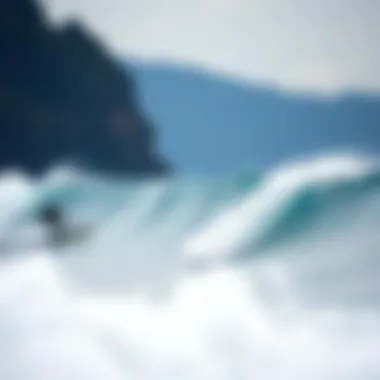
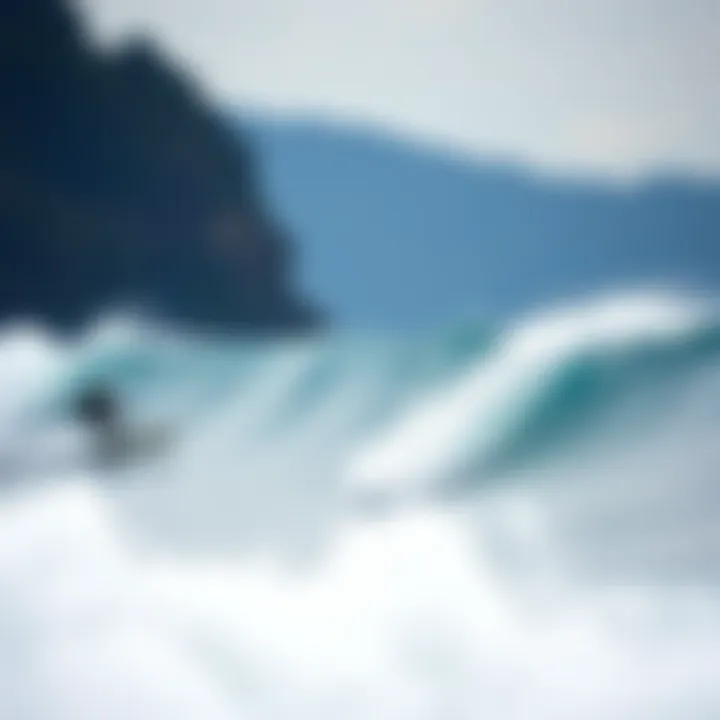
Besides its famous surf, Nias offers a peek into traditional Indonesian culture. Engaging with locals and experiencing their way of life can be as rewarding as catching the perfect wave. An additional bonus is the remoteness of it all, making for a more intimate experience with both the ocean and the local environment.
Sumbawa: The Hidden Gem
Sumbawa is often overshadowed by Bali and Sumatra, but for those in the know, it’s a hidden gem waiting to be explored. The islands are less crowded, allowing surfers to enjoy uninterrupted rides. Spots like Lakey Peak are renowned for their consistent waves and can cater to various surfing abilities.
Sumbawa’s natural beauty, combined with its warm waters, makes it a fantastic choice for boat trips. What sets Sumbawa apart is its laid-back vibe and the chance to surf away from the noise of large tourist crowds.
In summary, each Indonesian location presents a unique surfing experience, from the bustling beaches of Bali to the tranquil waves of Sumbawa. This diversity not only enriches the surfing experience but also enhances the overall journey of exploring Indonesia’s culture and natural beauty in a boat surf trip.
Planning Your Boat Surf Trip
When it comes to boat surf trips in Indonesia, planning is as crucial as carving through waves. This exciting journey requires an understanding of various factors to ensure not just safety, but an exhilarating experience on this aquatic playground. An effective plan can open up a world of seamless exploration, allowing surfers to navigate some of the most picturesque breaks in the world. Let’s dive into the specifics that lay the groundwork for an unforgettable trip.
Choosing the Right Season
Timing your trip can make all the difference. Indonesia's surf season typically aligns with the dry season, which runs from May to September. During this period, the swells are consistent, winds are favorable, and the weather is generally more predictable. Here’s why this season matters:
- Swells: Indonesia receives powerful swells, particularly from the Indian Ocean. In the dry season, you’ll see an increase in quality waves for both beginners and experienced surfers alike.
- Weather: Clear skies and sunshine can do wonders for your mood. Nobody likes to get caught in a torrential downpour while waiting for the perfect wave.
- Crowds: High season might draw more surfers, but with proper planning, you can still find secluded spots. Timing your boat departure during weekdays can help avoid the throngs.
- Seasonal conditions: Not every part of Indonesia is the same. For instance, Bali and the G-land area may offer incredible waves in different months, so researching specific regions’ conditions is key.
In short, checking swell predictions and climate forecasts can save you from hitting the water during less-than-ideal times.
Selecting Appropriate Vessels
The choice of vessel can greatly affect your surf adventure. It's not just about getting from one spot to another; it’s about comfort, safety, and accessing those coveted, less-traveled waves.
When picking a boat, consider these points:
- Size and Capacity: A larger boat provides more space and amenities, making it comfortable for groups, but smaller vessels can get closer to tricky breaks. Think about how many surfers will be joining you.
- Type of Boat: Whether it's a traditional fishing boat or a more modern surf charter, each has its pros and cons. For instance, boats like the La Punta offer specialized equipment, making them great for exploring multiple surf spots.
- Safety Features: Always inquire about life jackets, communication devices, and navigation tools. Knowing your boat has proper safety equipment provides peace of mind.
- Local Knowledge: The crew can be invaluable. They often know the waters better than any chart can show. Their familiarity with local tides, currents, and less-known breaks can enhance your surf experience.
To sum it up, selecting the right vessel isn't simply about the size or luxury; it's about how well it will serve the needs of you and your fellow surfers during this expedition.
"A great boat trip is not just about the ride, it's also about the journey we make on the waves together."
As you navigate these planning stages, keep your goals and preferences in mind. The more information you gather, the more enjoyable your surfing adventure will be as you glide through the vast waters of Indonesia.
Essential Gear for Boat Surfing
When setting out for a boat surf trip in the pristine waters of Indonesia, packing the right gear is not just a precaution; it’s crucial for an enjoyable and safe experience. Each piece of equipment serves a particular purpose, enhancing your surfing adventure while ensuring you’re prepared for whatever the ocean may throw your way. The harmony between the right gear and the unpredictability of nature is what allows for immersive experiences on waves that await.
Surfboards: Types and Recommendations
The most essential piece of equipment for any surfer is their surfboard. But not all boards are created equal, and understanding which types are most suitable for boat surf trips can make all the difference.
- Shortboards - Perfect for high-performance surfing, these boards are agile and allow for quick turns. However, they require more skill and stability. Good for advanced surfers looking to tame powerful, steep waves.
- Funboards - A happy medium between short and longboards, they combine the best of both worlds. These boards are stable and versatile, making them ideal for changing surf conditions.
- Longboards - For those who prefer a more laid-back style, longboards offer stability. They work well in smaller waves, allowing for a gentle ride. Great for beginners who may need that extra margin of error.
- Fish Boards - Featuring a shorter and wider design, fish boards are perfect for catching smaller waves. They excel in choppy conditions, adapting well to Indonesia's diverse surf spots.
Choosing the right board not only boosts performance but also adds to your comfort while on a boat. Always consider local conditions and your proficiency level when selecting the perfect surfboard.
Safety Equipment: Life Jackets and First Aid Kits
Safety can never be overstated, particularly when engaging with the unpredictable forces of nature. Out on the open water, having the correct safety equipment can mean the difference between a regular day and a painful disaster.
- Life Jackets - Always have well-fitted life jackets on board. For those less experienced or unaccustomed to the ocean, these are a must. Ensure they’re U.S. Coast Guard approved for maximum safety.
- First Aid Kits - You never know what might happen, from minor scrapes to more serious injuries. A well-stocked first aid kit should include:

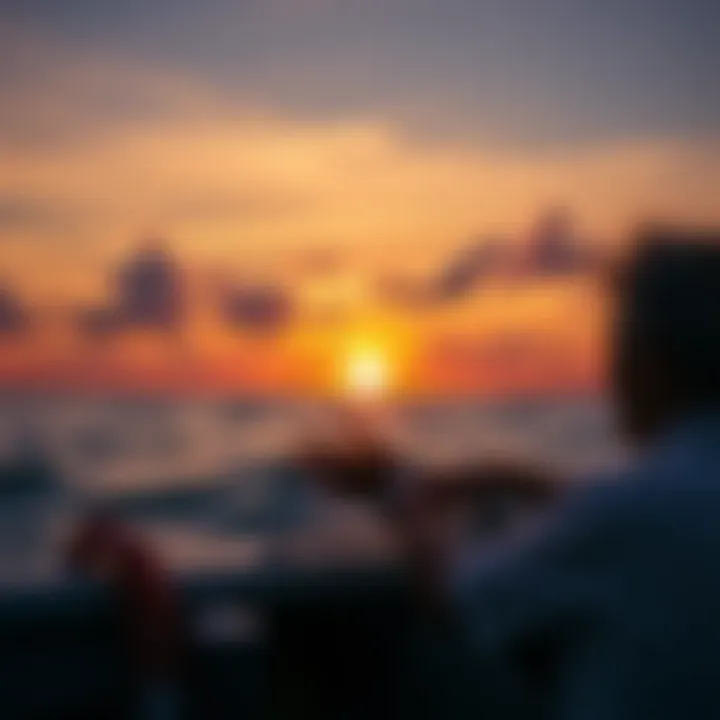
- Adhesive bandages
- Antiseptic wipes
- Pain relievers
- Gauze and tape
- Sunscreen to prevent burns
Incorporating safety into your gear is not just a matter of preparation; it demonstrates a respect for the ocean. The adage 'better safe than sorry' rings true, especially amid Indonesia’s captivating yet formidable surf spots.
Clothing and Accessories: Staying Comfortable
While technical gear is crucial, what you wear matters immensely. Staying comfortable can enhance your surfing experience. The right apparel allows you to focus on the waves rather than discomfort or sunburn.
- Wetsuits - Depending on the time of year and specific location, a wetsuit can protect you from the cold while also providing security against rash or irritation from surfing.
- Board Shorts or Swim Trunks - Opt for materials that dry quickly and provide freedom of movement. A snug fit can ensure that your pants don’t get in the way when paddling for waves.
- Sun Protection Gear - Rash guards with UV protection keep you safe from the sun’s harsh rays. Sunglasses—polarized options are best—can protect your eyes from reflections dancing off the water.
- Hats and Headbands - A wide-brimmed hat made for water sports can help shield your face from the sun, while headbands can keep sweat out of your eyes.
Making smart clothing choices not only increases comfort but also enhances performance. As much as the right surfboard can boost your capabilities on waves, the right attire can keep you focused and ready.
The ocean is both a playground and a wild beast. Equip yourself accordingly to enjoy every ride it offers.
When embarking on your boat surf trip in Indonesia, remember that the right equipment and clothing increase your chances of a successful and enjoyable adventure. Planning ahead with careful selections on all gear ensures you’ll be ready to tackle whatever comes your way.
Navigating Surf Conditions
Navigating surf conditions is a crucial element for anyone embarking on boat surf trips in Indonesia. Understanding these conditions can make or break a surf adventure, allowing surfers to pick the right waves while ensuring safety at sea. The unpredictable nature of ocean swells and currents means that knowledge in this area transforms a good trip into a spectacular one, filled with the exhilaration of riding ideal waves instead of battling with nature.
Understanding Swell Patterns
To truly harness the power of the ocean, one must first wrap their head around swell patterns. These patterns appear due to the wind's interaction with the open sea, creating rolling waves that travel across the ocean. It's not just about waiting for the waves to show up; gaining insight into where they originate helps surfers predict arrival times and the nature of what to expect.
Several factors influence these swell patterns: wind direction, duration, and fetch (the distance over which the wind blows). For instance, a swell generated in the Indian Ocean might have different characteristics than one from nearby coastal winds. In Indonesia, seasonal shifts can dramatically impact swell production. During the dry season, typically from May to September, surfers can enjoy consistent swells hitting various breaks, while the rainy season calls for careful attention to changing conditions.
Here are a few points to bear in mind:
- Observing Local Knowledge: Engaging with local surfers can be invaluable. They possess insights into the best breaks and wave types throughout the year. It's like having a cheat sheet on hand before the big test.
- Utilizing Surf Forecast Tools: Websites and apps like Surfline or Magicseaweed can help in tracking swell forecasts, providing essential tips on timing your sessions for optimal conditions.
"Understanding the swell is the key to unlocking Indonesia’s surf treasures. Every break tells a story you must be ready to read."
Assessing Tides and Currents
Tides and currents play an equally important role in shaping the surf experience. Knowing the tidal patterns—when water will rise or recede—can lead to thrilling rides or rocky experiences, especially if you end up at a break that requires specific tidal conditions for the best wave. For example, certain reefs are best surfed on a rising tide, while other breaks might excel on a low tide. Not recognizing this can lead to missed opportunities and frustrating sessions.
Currents, on the other hand, can be a surfer's best friend or worst enemy. They can assist by pushing surfers toward the right waves, yet they can also sweep you off course quickly if you are unaware. The infamous rip currents in some areas, while intimidating, serve their purpose in funneling waves. However, understanding how to navigate them safely is a significant concern that shouldn't be taken lightly.
Here are key takeaways for assessing tides and currents:
- Consult Tidal Charts: Make this a regular part of your daily preparation. Tidal charts indicate when waves will work best at specific locations. They are your roadmap.
- Monitor Local Weather: Be aware of how weather conditions impact surf breaks, including storms that can alter currents and tidal flows temporarily.
Navigating surf conditions demands more than mere luck. It requires careful planning and a deep respect for the ocean's power. With the right approach, surfers can not only enjoy their time on the waves but also appreciate the stunning beauty of Indonesia's coastline.
Safety Considerations on Boat Surf Trips
When it comes to boat surfing in Indonesia, safety is paramount. The combination of unpredictable ocean conditions and remote locations makes it necessary for surfers to prioritize their well-being while enjoying the thrill of the waves. This section aims to shed light on those crucial safety factors that every surfer should consider, ensuring a safe and enjoyable adventure on the water.
Weather Conditions and Marine Safety
The weather in Indonesia can change faster than you can say "surf's up." Before heading out, it's vital to check the current weather reports and future forecasts. Big storms can brew up seemingly out of nowhere, turning calm waters into treacherous waves in a heartbeat. Watch out for strong winds, sudden downpours, or any signs of stormy weather that could affect your time on the water.
A Few Key Points to Remember:


- Wind Speeds: Check wind conditions; high winds can create unsafe conditions.
- Local Weather Patterns: Different regions can experience unique weather phenomena. Familiarize yourself with local patterns for safer navigation.
- Access to Shelter: Always have an exit strategy. Know the nearest points of shelter before setting off, so you’re not left high and dry in a pinch.
Moreover, understanding marine safety protocols is equally important. Life jackets are a must, not just for compliance but as a sensible precaution. Getting knocked from your board or tossed around in a rip current can happen faster than you think. It doesn’t hurt to brush up on basic swimming techniques and how to signal for help, should the worst occur.
Emergency Protocols and Communication
Even with all precautions in place, emergencies can happen—the key is to be prepared. Having a well-thought-out emergency plan can mean the difference between a minor inconvenience and a serious situation.
First and foremost, establish a communication plan. Make sure someone on land knows your itinerary and expected return time. This becomes crucial if you're out of range of cell phone service. Using radios or satellite phones could prove beneficial, especially in more isolated areas. Setting up a buddy system with fellow surfers can also improve safety; onlookers can step in if things don’t go as planned.
Essential Emergency Steps to Follow:
- Create Check-In Points: Have a set time to check in with someone ashore during long trips.
- Identify Local Resources: Know who the local authorities are and how to contact them, should you encounter trouble.
- Stay Calm and Assess the Situation: If an incident occurs, keeping a level head can help you think more clearly and react more effectively.
In a nutshell, safety on boat surf trips is about foresight and preparation. Understanding weather dynamics and having a solid emergency protocol adds layers of protection that can enhance not only your experience but also your confidence as you navigate the glorious waters of Indonesia. Engaging with the local surf communities can also offer additional insights and tips, often helping to spread knowledge about safety measures specific to each destination.
Cultural Aspects of Surfing in Indonesia
Surfing in Indonesia is not solely about riding the waves; it encapsulates a rich cultural tapestry that intertwines local beliefs, traditions, and community spirit. For surfers, particularly those venturing on boat trips to experience the remote breaks of this archipelago, understanding the cultural undercurrents can be as essential as mastering their surf techniques. Acknowledging and respecting local traditions not only enhances the travel experience but also fosters goodwill and positive relationships between visitors and residents.
Respecting Local Traditions
Before setting sail to catch the perfect wave, it’s crucial for surfers to grasp the local customs that shape the surfing culture in Indonesia. Many surf spots, for instance, are tied to spiritual beliefs or historical narratives that locals hold dear. Engaging thoughtfully with these traditions is beneficial for a smooth experience on the water.
- Understand Local Customs: Each region has its rituals, from offering prayers before entering the ocean to specific local greetings that are customary. For example, in Bali, surfers may observe local fishermen performing a canang sari (small offerings) at sunrise. Participating or showing appreciation hints at respect for their way of life.
- Support Local Economy: By purchasing surf gear from local craftspeople or hiring surf guides from the community, surfers contribute positively. Opting for local businesses not only strengthens the local economy but also showcases a commitment to sustainable tourism practices.
- Follow Wave Etiquette: Respecting the local surfers, particularly experienced individuals at the sites, establishes a sense of community. Knowing when to yield the right of way can help avoid misunderstandings and tensions in the water.
Engaging deeply with these customs reflects a genuine appreciation and respect for the places surfers visit, paving the way for shared experiences and interactions.
Engaging with the Surf Community
Diving into the surf culture of Indonesia opens doors to a vibrant community rooted in tradition and shared passion. Building connections within this community can enrich not just the surfing experience but also provide a broader understanding of the local lifestyle.
- Participate in Local Events: Many coastal areas celebrate surf competitions or festivals. Engaging in these events, whether as a spectator or competitor, allows surfers to bond with locals, enhancing the cultural exchange.
- Join Local Surf Schools or Camps: Surfers wishing to hone their skills while connecting with the culture might consider joining a local surf school. These schools often blend surfing lessons with local cultural insights, enabling a deeper dive into what makes each location unique.
- Connect through Conservation: Many surfers in Indonesia advocate for ocean conservation and beach clean-up initiatives. Joining these efforts not only benefits the environment but also showcases solidarity with local communities who rely on the ocean for their livelihoods.
Engaging with the surf community helps build relationships that enrich the surfing journey and fosters a sense of belonging.
Finale: Embracing the Adventure
When it comes to surfing, it’s not just about catching waves; it’s about weaving unforgettable stories that blend thrill, culture, and the serenity of nature. Boat surf trips in Indonesia offer a unique canvas for this narrative, fostering a deeper connection with the ocean and the vibrant cultures that surround it. In this section, we’ll reflect on the intricate layers of the boat surf experience and consider how to preserve the beauty we encounter along the way.
Reflecting on the Boat Surf Experience
The allure of Indonesia's surf spots is relentless. Whether you're riding the perfect barrel at Uluwatu or navigating the pristine waters off Sumbawa, every moment on a boat surf trip serves as a reminder of the ocean's power and beauty. Each swell captured beneath your board is a reminder that your adventure is as much about personal growth as it is about sportsmanship.
Many surfers find that these trips go beyond the adrenaline rush. The camaraderie formed among friends and fellow travelers fosters bonds that can last a lifetime. Nights spent on the deck under a blanket of stars, sharing stories and laughter, create memories that are treasured far beyond the trips' end. These moments nurture a sense of belonging, connecting you to like-minded individuals regardless of where you hail from.
It’s also worth noting that the boat surf experience can be transformative. Surfers often come back with a renewed sense of wonder, enriching their approach to life. This journey through Indonesia is more than just surf; it’s a pathway to personal exploration, where each wave can signify a new beginning or a fresh outlook on challenges faced.
Encouraging Sustainable Surf Tourism
As we embrace this thrilling adventure, it’s essential to also champion sustainable surf tourism. The ocean isn’t just a playground; it’s a crucial ecosystem that requires our protection. Surfers hold a unique position as stewards of the coastline, making it imperative to prioritize the health of our oceans.
Practicing responsible surf tourism means taking steps that safeguard the environment. Here are some considerations for travelers looking to make an impact:
- Minimize Waste: Always bring reusable water bottles, refuse single-use plastics, and clean up your surroundings after each surf session.
- Support Local Communities: Choose local guides and businesses that prioritize sustainability. Engaging with native surf schools helps fortify local economies and ensures that tourism benefits those who reside there.
- Follow Guidelines: Adhering to local rules and regulations regarding surf spots is vital. Just like staying in designated areas to preserve natural resources, this practice ensures that surfers can enjoy these destinations for generations to come.
By cultivating a culture of respect toward the ocean's bounty, surfers can contribute to a better surfing future. Encourage fellow surfers to join in on this mission; after all, each wave conquered is a shared responsibility.
"The greatest threat to our planet is the belief that someone else will save it." - Robert Swan







